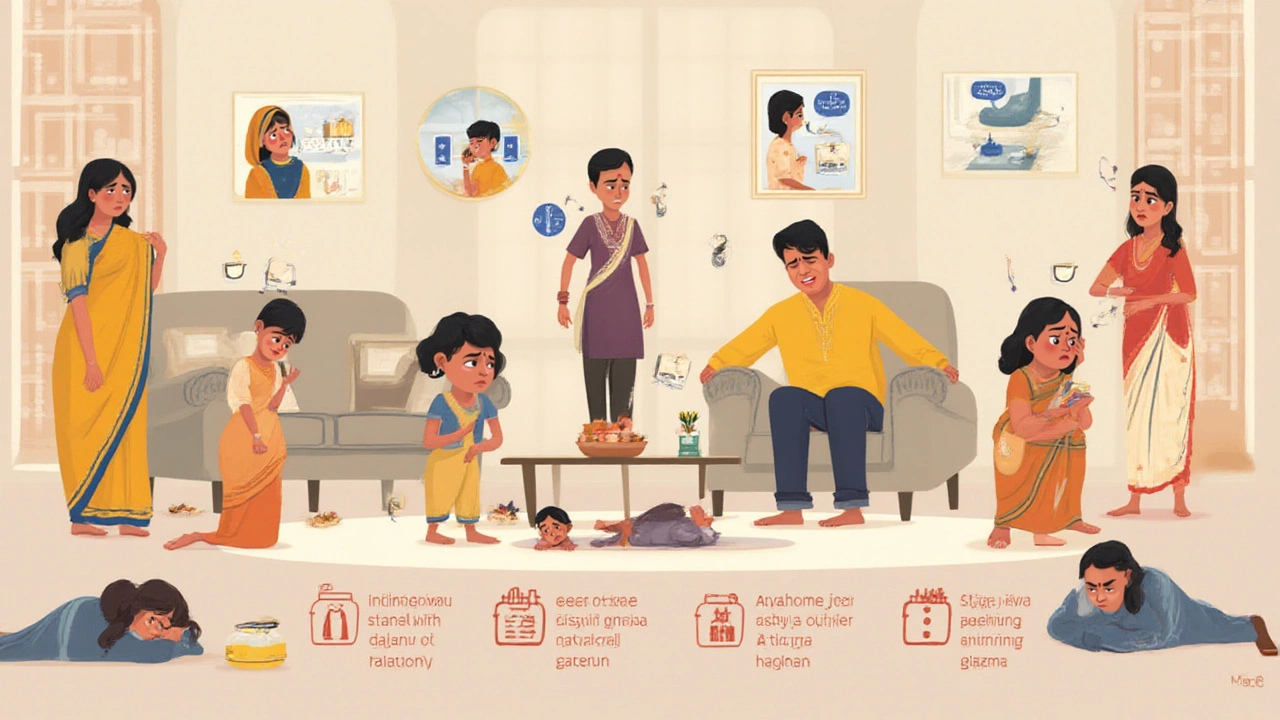
You might think depression only looks like tears, gray skies, and hiding under the covers, but Sylvia Plath’s the bell jar will shake that idea to its core. This book doesn’t give you a textbook version of mental illness. Instead, it drops you into the mind of Esther Greenwood, a gifted, driven young woman whose world goes from buzzing with promise to suffocating with hopelessness. “I felt very still and empty, the way the eye of a tornado must feel,” Esther tells us—and that sums up her experience of depression better than any clinical description.
Plath’s only novel has made waves for decades, not just for its literary force, but for how bluntly it calls out what it’s like to be cracked open by mental illness when the world expects you to smile. But what mental illness does The Bell Jar really show? Let’s untangle it.
The Heart of The Bell Jar: Exploring Esther’s Struggle With Depression
Esther Greenwood’s descent is slow, confusing, and all too familiar to anyone who has watched hope quietly drain away. At first glance, she’s a high achiever on the surface—straight As, magazine internships, a shot at the big time in New York. Underneath, though, cracks spread fast. She stops sleeping. Simple decisions (like what to eat or what to wear) become impossible. She’s trapped, detached from her friends and dreams, convinced she’s failing at womanhood and life.
Mental illness in The Bell Jar isn’t just background color. Everything happens inside Esther’s head. The famous “bell jar” metaphor—a glass dome separating her from the ordinary air of life—paints an eerily vivid picture of how depression isolates. Even surrounded by people, she’s alone in her fog. Every sound is muffled. “Wherever I sat… I would be sitting under the same glass bell jar, stewing in my own sour air.” That line is still quoted today because it nails how separating and stifling depression can be.
But Plath’s book isn’t limited to just feeling sad. In fact, Esther’s flatness, her numbness, and even her shocking lack of emotion in moments that should evoke strong feelings—whether facing her own self-harm or the death of her father—are classic (and often misunderstood) symptoms of major depressive disorder. The Diagnostic and Statistical Manual of Mental Disorders (DSM-5) spells this out clearly: depression isn’t always about tears. Sometimes, like with Esther, it’s about feeling nothing at all. That numbing can be just as dangerous as despair.
One reason Esther’s illness rings true is because Sylvia Plath wrote from experience. Plath herself suffered from serious depression and survived multiple suicide attempts before dying by suicide in 1963—the same year The Bell Jar was first published. You can track the overlap: New York internship? Check. Breakdown at home? Check. Hospital stays, electroconvulsive therapy, the endless sense of being trapped? All drawn from life. Plath’s language was clinical before mental health had much of a public language. Even the hospital scenes, including botched ECT and the cold, distant medical staff, match mid-century reality.
Esther’s illness goes through recognizable stages for depression—from early mood swings, to a total inability to function, to thoughts of escape and self-harm. Plath doesn’t glamorize any of it. No poetry here. It’s raw, brutal, and stubbornly unfixable by willpower alone.
Modern psychologists widely agree: The Bell Jar’s portrait checks nearly every box for depression, with a side of suicidal ideation and trauma. If you look for other illnesses in the book, like anxiety or psychosis, there are hints, but nothing like depression’s huge shadow. There’s no single event or outside trauma—her despair is inward, chemical, and deeply isolating.
Take a look at the common symptoms of major depressive disorder (from the DSM-5):
- Persistent sadness or empty mood
- Loss of interest or pleasure in nearly all activities
- Significant weight loss or gain
- Insomnia or sleeping too much
- Slow movement or agitation
- Fatigue or loss of energy
- Feelings of worthlessness, guilt, or hopelessness
- Trouble focusing, thinking, or making decisions
- Thoughts of death or suicide
Sound familiar? Nearly all of this crops up in the novel. Esther’s food aversion, her inability to sleep, her lack of joy even in exciting settings, her self-hatred—all classic depression. Even a quick Google will show hundreds of articles calling The Bell Jar the literary case study in depression.

Reality Check: The Bell Jar, Society, and Stigma
Here’s where things get raw. Depression in the early 1950s wasn’t just painful, it was taboo. The world Esther lives in demands women be cheerful, attractive, focused on family and marriage. She’s supposed to embrace a future of children, housework, and doting on a husband. Ambition? Career dreams? Those were suspect, sometimes outright shamed. Esther chafes against these roles, and that social pressure is a big part of the novel’s weight.
There’s a vicious cycle: The more Esther feels she can’t fit in (either as the perfect girlfriend or the ambitious writer), the worse her sense of failure gets—and the heavier her depression becomes. Plath nails how gender expectations double down on mental illness, making it even harder to talk about or get help.
Hospitals in the novel aren’t exactly havens of healing. Early treatments, like “unmodified” ECT (without anesthesia), were traumatic and probably made things worse. The care Esther gets is a mixed bag: some doctors are cold, patronizing, or clueless. Others, like Dr. Nolan (one of the few positive female figures), show compassion and understanding. That matters. Empathetic care, even today, can be the difference between feeling hope and falling further into despair.
If you want a snapshot of just how little the 1950s understood mental health, look at the numbers. According to US psychiatric archives, about 70% of psychiatric patients in the 1950s were women, and most got vague diagnoses like "nervous disorders." The stigma was massive. Women were often shipped off to asylums for anything from disobedience to exhaustion. Actual talk therapy was rare. Only in the late 1950s did antidepressants, like imipramine, become available. Before then, ECT or institutionalization were the main “treatments.” Plath’s book, published just a few years after her own breakdown, gives a front-row seat to this chilling reality.
Here’s a quick snapshot comparing treatment realities then vs. now:
| 1950s | 2025 |
|---|---|
| ECT (often unmodified) | Personalized, supervised ECT, therapy, medication |
| Frequent institutionalization | Outpatient therapy & community support |
| Stigma for women | Better awareness, support groups, advocacy |
| Psychoanalysis rare, mostly men | Cognitive behavioral therapy (CBT), gender-neutral care |
The Bell Jar didn’t just expose mental illness; it exposed the world’s failure to deal with it. That’s a big reason it’s still read, picked apart, and argued over today. People see their own struggles—and their society’s blind spots—reflected in its pages.
Call it what you want: clinical depression, major depressive disorder, or simply "the bell jar effect"—the pain is real and lasting. It’s easy to see why the novel made waves and still appears on high school and college reading lists. If you’ve ever felt pulled under by mental illness, The Bell Jar feels like someone else finally gets it.

Tips, Takeaways, and Recognizing the Signs: What The Bell Jar Teaches About Depression
If The Bell Jar hits hard, it’s because it doesn’t sugarcoat a thing. There are a few big lessons and tips you can actually use—whether you’re struggling yourself, know someone who is, or just want to recognize warning signs before things get bad.
- Listen beyond the “I’m fine.” A lot of folks who are depressed get very skilled at masking it—on the outside, things seem normal, just like Esther performing in New York. But shifts in sleep, appetite, energy, even just ‘checking out’ emotionally, can be red flags.
- Emotional numbness is a symptom. If someone seems flat, unbothered, or disconnected when they used to care, don’t blow it off as stubbornness or laziness. It’s not a “bad attitude”—it’s a warning sign.
- Watch for withdrawal. Depressed people often pull away from friends, skip out on things they love, or stop answering texts and calls. Some days, that’s about energy, not desire. Gentle check-ins matter.
- Don’t underestimate self-harm thoughts. Esther’s attempts were brushed aside by her mom and several doctors. If someone talks about not wanting to exist—or if you have thoughts like this—don’t ignore it. There are crisis lines, text services, and compassionate professionals in 2025 who know how to help.
- Therapy isn’t one-size-fits-all. Esther’s “bad” doctor moments (like Dr. Gordon, who cares more about himself than her needs) are familiar to a lot of people. If a therapist or doctor isn’t a fit, it’s okay to try someone else. Support can make or break recovery.
- Medication helps many, but stories like The Bell Jar show why medical care needs to be paired with real understanding and dignity. If you’re struggling with meds, talk to your doctor—no need to “tough it out.”
Check this quick table of depression resources in 2025:
| Resource | 2025 Solutions |
|---|---|
| Emergency Help | Text-based crisis hotlines, AI mental health chatbots, immediate therapy apps |
| Long-term Care | Telemedicine therapy, sliding-scale clinics, support groups (online and in-person) |
| Education & Stigma | School mental health curriculums, workplace training, awareness campaigns |
Want a tip that works? If someone opens up, just listen. Don’t rush to fix or judge. The worst thing you can say to someone struggling is “Can’t you just snap out of it?” If a book like The Bell Jar has taught anything, it’s that depression isn’t a character flaw or a phase. It’s a real illness with real effects—and there’s help, even when the world feels locked under glass.
A final fact: Since The Bell Jar came out, calls to suicide hotlines have tripled during “Plath anniversaries.” That’s not just coincidence. Books don’t cure, but they make people feel less alone—and sometimes that’s all it takes to start the road to healing.
If you see yourself or someone you care about in Esther’s story, don’t wait for things to get worse. Talk, reach out, read, and know that the bell jar can (and does) lift—no matter how airtight it feels.


